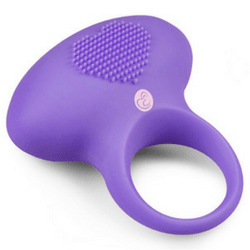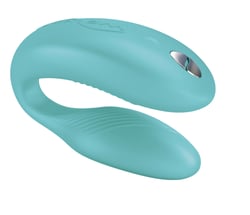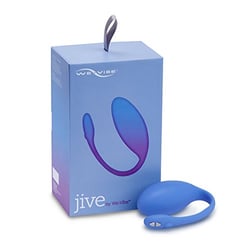The orgasm gap is a phenomenon that is an issue that impacting many more women than one might imagine. Only recently has this issue been given a name. That alone says a lot about the sluggish progression of our sexual culture into the 21st century, but that’s a story for another post.
If you’re interested in learning more about the orgasm gap, you’re in the right place! In this article, we’ll answer all of your questions, including:
- What is the orgasm gap?
- Why does it exist?
- What can I do about it?
We hope this information helps you and your partner enjoy mind-blowing sex and connect on a profound level.
What is the orgasm gap?
The orgasm gap is a term that refers to the disparity between the frequency of male orgasms and female orgasms during heterosexual sex. You’ll notice that the focus here is not on sex in homosexual relationships, because studies show that this gap is nearly nonexistent in gay relationships and quite limited in lesbian relationships. So it’s really the straight couples that need to get their act together.

Have a look at some stats from a study conducted by a group of professors from North American universities. The percentage refers to the likelihood that a certain group would orgasm when sexually intimate.
- Heterosexual men: 95%
- Gay men: 89%
- Bisexual men: 88%
- Lesbian women: 86%
- Bisexual women: 66%
- Heterosexual women 65%
These statistics reflect the population of the United States but you can probably safely assume that it’s at least similar, if not worse all around the world.
Why is there an orgasm gap?
Now that you know the ‘what’ it’s time to learn the ‘why’.
Every couple is different, but there are some universal reasons as to why there is an orgasm gap. These reasons include:
- Female pleasure isn’t a priority: For some reason we humans got it into our heads that it’s OK if women don’t orgasm during sex. It’s viewed by many as ‘great if it happens’ and most guys see it as a bonus. There’s too much of a focus on ‘penis-in-vagina’ as the main act and ejaculation as the end goal of sex.
- It can be more difficult for women to orgasm: Some women find it more difficult to become aroused and ultimately orgasm than their male partners. Additionally, women who take longer to orgasm can begin to feel too much pressure to be able to do it, and prefer to just give up rather than put in the effort and ‘make their partner wait.’ (Keep in mind that a good partner will not consider it as ‘waiting’ or ‘taking too long’)
- Heterosexual men don’t know how to do it: We can cut straight, cisgender men some slack since they might not be all that familiar with the female equipment, but they should be interested to learn how to make their partner orgasm. Oh yeah, and women need to learn how to speak up and demand orgasms from their male partners.
How can you close the orgasm gap?
So how can you solve this problem? Let’s take a look at some of the biggest issues and some of their solutions.
Dispelling myths
First, we’ve got to forget about how heterosexual sex is portrayed in pop culture and in porn. There are some women who orgasm easily simply from penetration, but the truth is that most women don’t. There has to be less focus on the penetration part and more focus on kissing, touching, play and oral sex in order to arouse the woman.
While some women are able to experience G-spot orgasms, for most women, the clitoris is the true start of the female orgasm. So if you don’t orgasm from G-spot stimulation, don’t worry about it!
And finally, the penetration part of sex, if you choose to go that route, doesn’t have to last for an hour. In fact, for most heterosexual couples, penetration lasts 3-5 minutes. So stop trying to make sex last all night and spend more time on the good stuff - clitoral stimulation and arousal of other erogenous zones!
Mix it up!
Just like with your exercise routine, diet and pretty much everything else, it’s important to mix it up with a variety of different arousal tactics. Don’t go for the same ‘first this, then that, then the next’ routine every time.
And a great way to mix it up? Sex toys! There are so many sex toys out there that there is surely at least one for every couple. In fact, adding sex toys to their sex life is a life changing experience for many couples.
 If you and your partner like penetrative sex, but want to make it more orgasmic by adding clitoral stimulation, consider a toy that is made specifically for use during heterosexual sex. One example is a vibrating cock ring. These fit around the penis and help erections last longer, and they also have a part at the base that stimulates the clitoris during sex.
If you and your partner like penetrative sex, but want to make it more orgasmic by adding clitoral stimulation, consider a toy that is made specifically for use during heterosexual sex. One example is a vibrating cock ring. These fit around the penis and help erections last longer, and they also have a part at the base that stimulates the clitoris during sex.
 Another great toy that adds clitoral stimulation to penetrative sex is the We-Vibe Sync, a wearable couples' vibrator that is designed to be enjoyed with a partner during sex. It is inserted vaginally and pleasures both partners during sex. Many of our customers swear by it: "The feeling this vibrator gives to both of us is overwhelming and its hard to have sex without it now."
Another great toy that adds clitoral stimulation to penetrative sex is the We-Vibe Sync, a wearable couples' vibrator that is designed to be enjoyed with a partner during sex. It is inserted vaginally and pleasures both partners during sex. Many of our customers swear by it: "The feeling this vibrator gives to both of us is overwhelming and its hard to have sex without it now."
 If you want to spice foreplay up, try the We-Vibe Jive. This bad boy is a Bluetooth controlled wearable G-spot vibrator. You or your partner can control the vibrations of this titillating toy with the We-Connect app. This toy can be worn around the house and even out and about, and is totally discreet. As long as you keep it quiet, consider wearing this toy out on a hot date, so that by the time you get home, you’re both bursting with desire!
If you want to spice foreplay up, try the We-Vibe Jive. This bad boy is a Bluetooth controlled wearable G-spot vibrator. You or your partner can control the vibrations of this titillating toy with the We-Connect app. This toy can be worn around the house and even out and about, and is totally discreet. As long as you keep it quiet, consider wearing this toy out on a hot date, so that by the time you get home, you’re both bursting with desire!
Now you know what the orgasm gap is, why it exists and even some ways you can go about solving it, at least in your relationship. Just remember that most real sex isn’t how it’s portrayed in pop culture and in porn, and to help solve it, good communication is key. And if you need or want a little help, sex toys for couples provide a myriad of ways to get those juices flowing.


